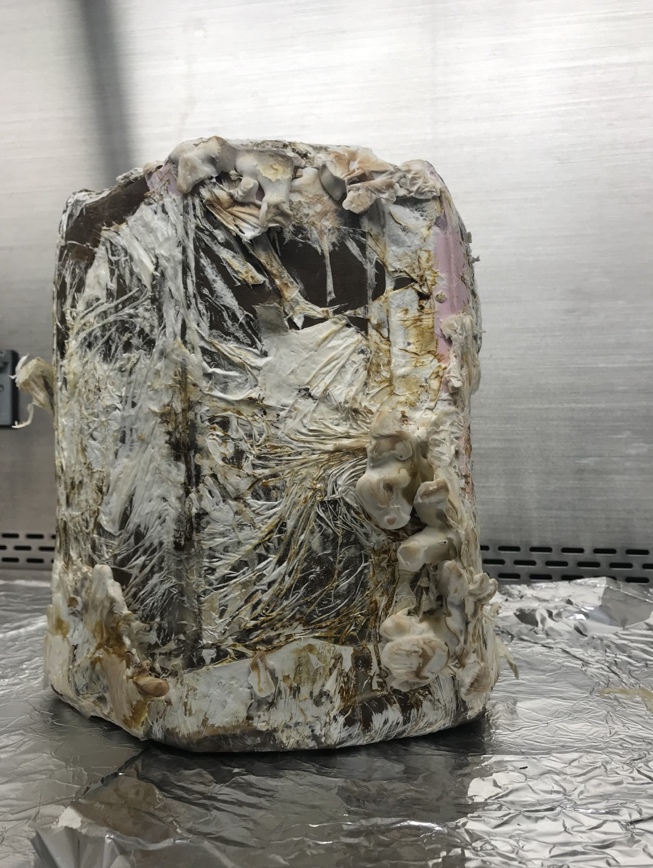Fret not! Your fantasies of living on Mars or the Moon may soon be a dream come true. On January 14th 2020, NASA announced its ecological housing plan project, which works in correlation with their myco-architecture/mycelium mushroom leather clothing research. This lunar sustainability project is linked to the NASA Innovative Advanced Concepts program (NIAC), currently being developed in Silicon Valley, California.
Instead of metal or glass housings, the current modern era of green technology has prompted NASA to invest their time in searching for more sustainable, off-Earth dwellings. Did you really think that plant world’s research and development would be restricted to vegan pioneer designer Stella McCartney’s first mycelium leather outfit (see Stella McCartney launches the world’s first mycelium leather garments)? No way José!
At present, NASA’s Ames Research Center is developing prototype containers made using the invisible underground threads that make up mycelium. The objective of this project is to ultimately allow individuals to be able to independently cultivate their own habitats using lighter materials.
image courtesy of NASA / 2018 Stanford-Brown-RISD iGEM Team
Self-replicating, Self-repairing Planetary Habitats Made of Fungus
A Self-building, Self-growing, Self-repairing Home
Synthetic biology, the study of how life itself can be technologically transformed, warrants the brilliant idea of creating homes that can eventually self-build and repair.
The naturally occurring organisms used are produced using fungi and fabricate spores (ie a cell or a multicellular formation), and consume organic matter such as the yeast in beer, bread or salads Molds are subsequently generated in the mycelcyanoium, the invisible part of the fungus, which is made up of “tiny threads that can build complex networks with extreme precision making materials similar to leather”. The NASA site states these organic materials could go so far as to produce antibiotics such as penicillin.
As a result, astronauts would no longer have to plan their travels to Mars, rather sending an airtight bag containing microbes and spores to said planet. The final product would appear as a three-layer dome, producing oxygen for cosmonauts, taikonauts and astronauts alike.
Water and air would be ultimately passed through a robot upon arrival inside a bag, growing algae and producing oxygen and biomass. This would subsequently fuel the mushrooms for growth until they reach a state of solid matter, forming a well-founded shelter.


